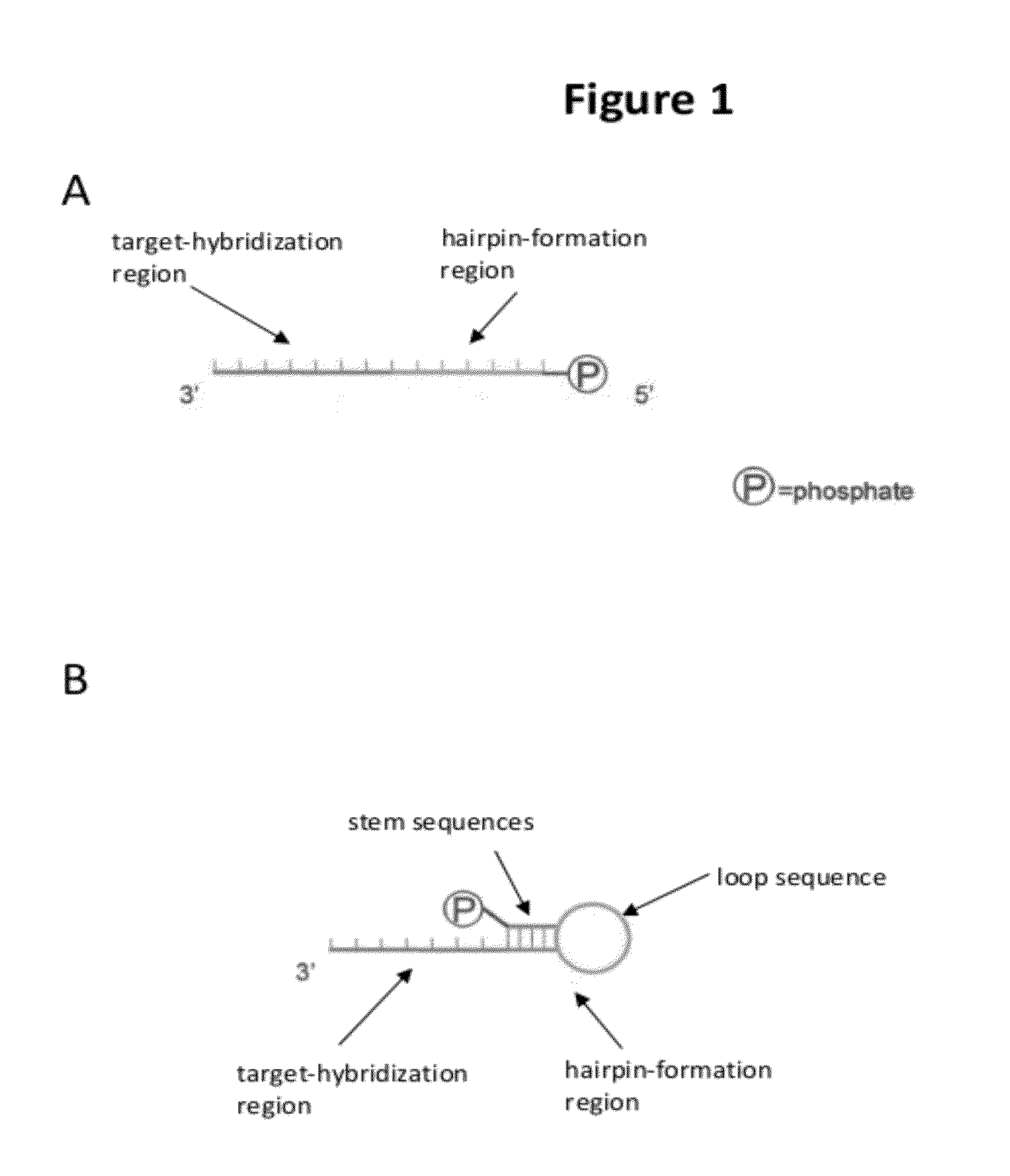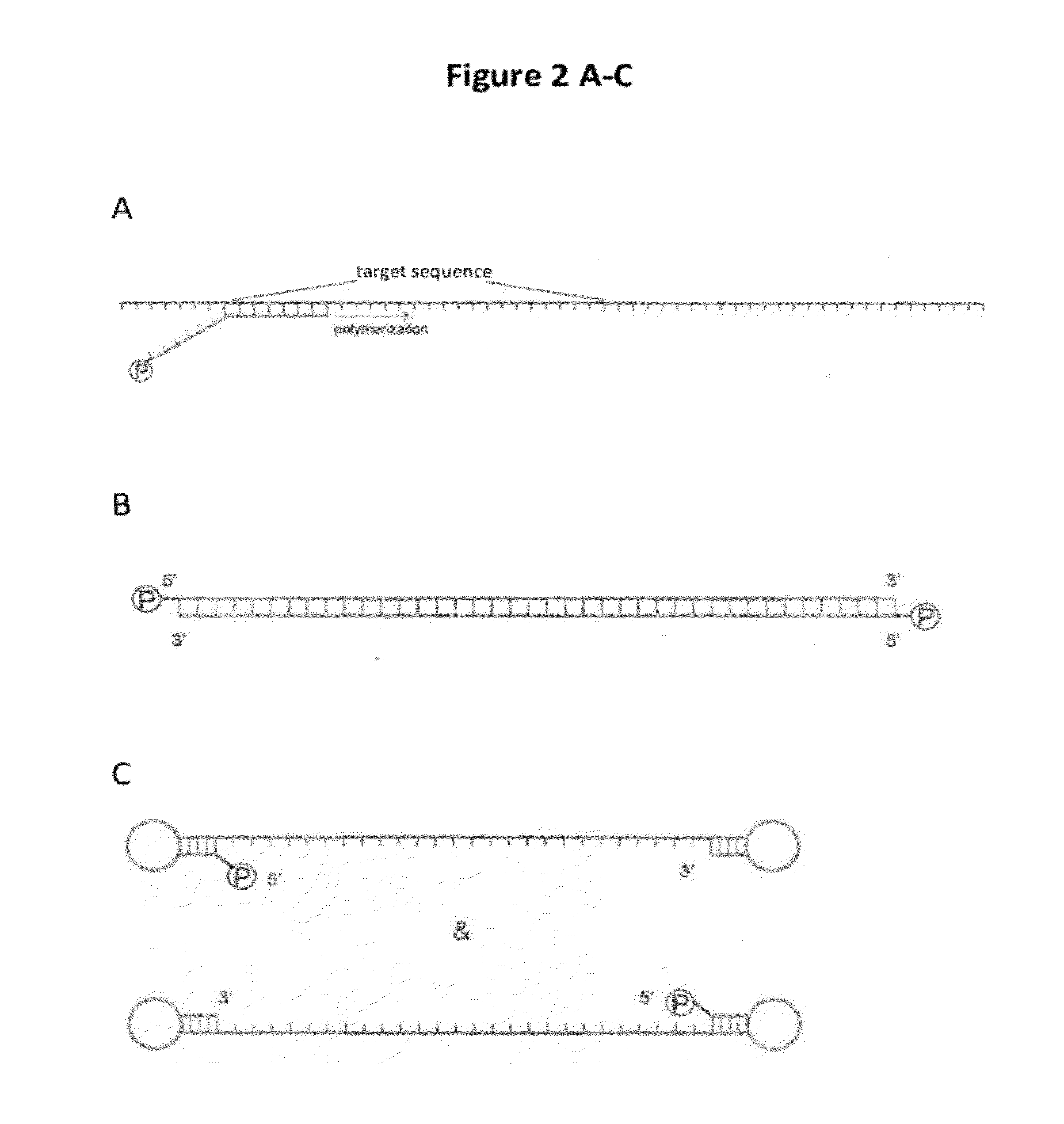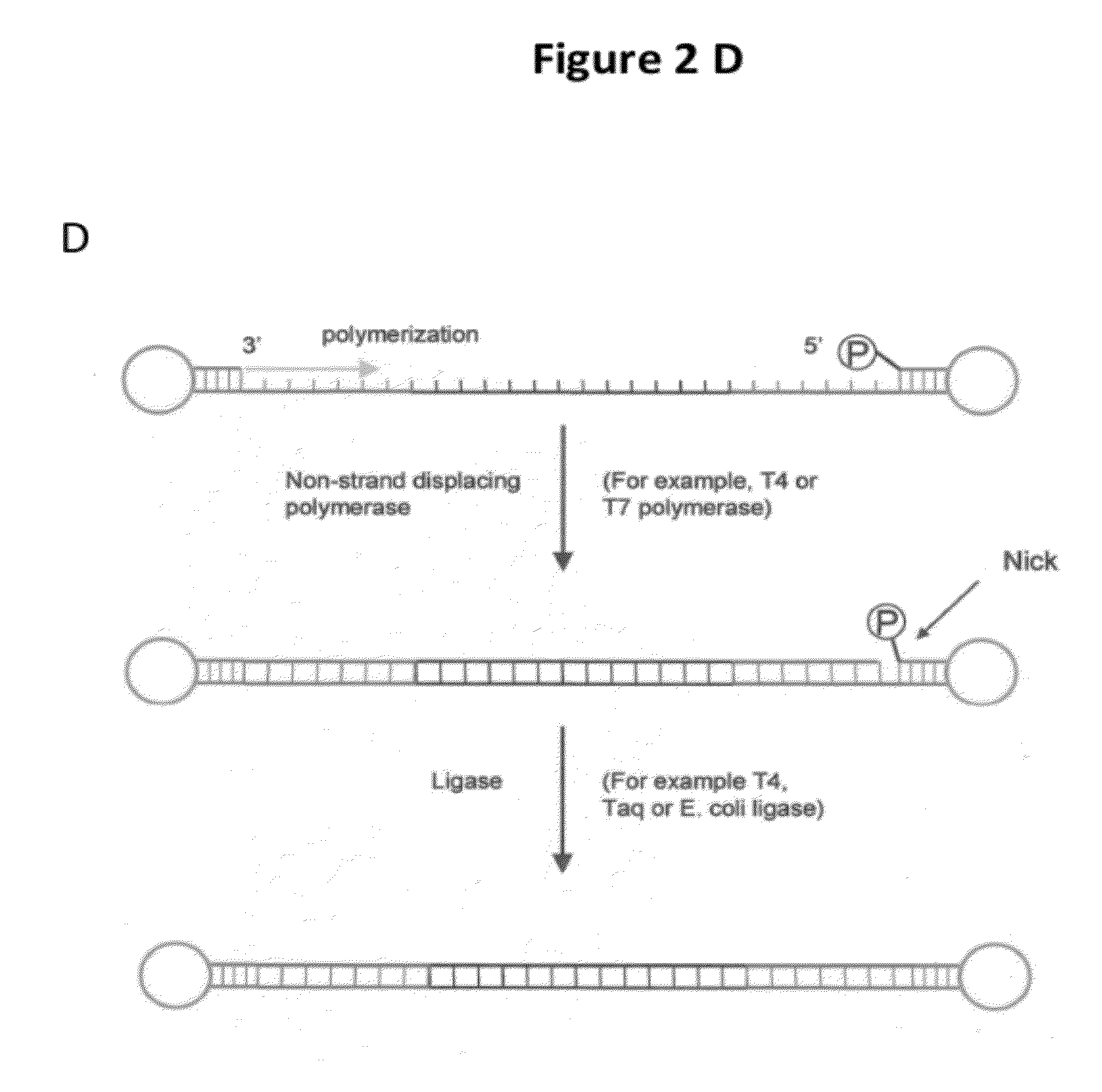Compositions and methods for producing single-stranded circular DNA
- Summary
- Abstract
- Description
- Claims
- Application Information
AI Technical Summary
Benefits of technology
Problems solved by technology
Method used
Image
Examples
example 1
Generation of Single-stranded Circular DNA Using a Hairpin PCR Primer
[0028]Hairpin PCR primers are designed to amplify a target of interest. A reaction solution is prepared by combining: a nucleic acid containing the target DNA sequence, hairpin PCR primers, an appropriate thermostable polymerase (Taq, Pfu, etc.), and dNTPs in an appropriate buffer containing the appropriate salts and at the appropriate pH for the selected polymerase. The reaction solution is cycled through denaturation, annealing, and extension temperatures (e.g., 95° C., 55° C., 70° C.) for an appropriate amount of time, and suitable number of rounds to achieve PCR amplification.
[0029]Subsequently, reaction solution is heated (e.g., 95° C. for 10 minutes) to denature the double stranded PCR products, and cooled to allow for the hairpin to form. Diluting the PCR reaction products or controlling the speed of cooling can be used to drive the reaction towards the desired intramolecular hairpin products and away from t...
PUM
| Property | Measurement | Unit |
|---|---|---|
| Composition | aaaaa | aaaaa |
| Interaction | aaaaa | aaaaa |
Abstract
Description
Claims
Application Information
 Login to View More
Login to View More - R&D
- Intellectual Property
- Life Sciences
- Materials
- Tech Scout
- Unparalleled Data Quality
- Higher Quality Content
- 60% Fewer Hallucinations
Browse by: Latest US Patents, China's latest patents, Technical Efficacy Thesaurus, Application Domain, Technology Topic, Popular Technical Reports.
© 2025 PatSnap. All rights reserved.Legal|Privacy policy|Modern Slavery Act Transparency Statement|Sitemap|About US| Contact US: help@patsnap.com



